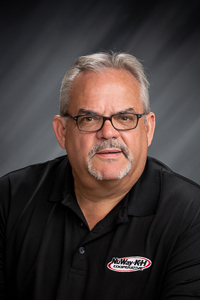HOW’S RETAIL AFTER COVID?
by: Al Seckinger, VP of Retail Operations
How is retail after Covid? I thought I’d address a couple of questions I frequently get asked about – COVID and electric vehicles. Today, people buy and order online and get their groceries delivered—or just pick up their groceries at locations. Shopping was already trending heavily online before the pandemic, and during COVID that segment of retail sales shot into the stratosphere.
Amazon started the move to e-commerce, but big box locations have responded by allowing purchasing online and have accelerated shipping to compete with Amazon. Speed is the key to ramping up both online and curbside delivery. I’m sure you’ve read about recent layoffs at Amazon.
COVID also created the shortages of nationally branded products and opened the door to big box brands and private labels. Some use the term “shocks to loyalty.” What that really means is the consumer is more concerned with availability and value than the brand name of the product. Of course, the convenience stores owned and operated by NuWay-K&H Cooperative are not big into groceries, but here’s what we’ve observed. At the start of the pandemic, it was not uncommon to receive only one-third of the products we order for our stores.
For example, we had a hard time stocking the shelves with potato chips. National brands like Frito-Lays, Pringles and Kettles just weren’t available. So, we began stocking private labels like Uncle Rays and our customers bought them.
The same thing was true of national breakfast food brands like Kellogg’s and General Mills. We couldn’t fill our shelves with those brands, so we began ordering private labels like Malt-o-Meal, and they sold just fine.
Now we’re back to receiving at least two-thirds of what we ordered, but our customers continue to buy the private labels. One reason they do is that, with rampant inflation, the price of the national brands has skyrocketed, and our customers see private label brands as a better value.
So, yes, COVID and the supply chain disruption did change things, but I think they changed things for the better for big box stores and c-stores alike.
WILL ELECTRIC VEHICLES CHANGE THINGS?
Sales of electric vehicles have picked up, but if you look at who is purchasing these vehicles, it is more of a niche market—almost a fad. Large cities and states like California have the majority of the new electric vehicle market, which today is around 5%. Five percent is a big jump over last year, but it is still insignificant in the big picture. Electric vehicle sales have a long way to climb before we need to worry about servicing them at our convenience stores.
Currently, there is no infrastructure to charge electric vehicles, especially in the rural areas where we operate. The cost to install charging stations is prohibitive, and if we do, it opens a whole new discussion on how to put a price on a fill of electricity. No one has done it before. Can it be profitable?
As it stands now, there are a lot more questions than answers about electric cars.
For a complete list of where you can find our cardtrol and c-store location, visit this page.


